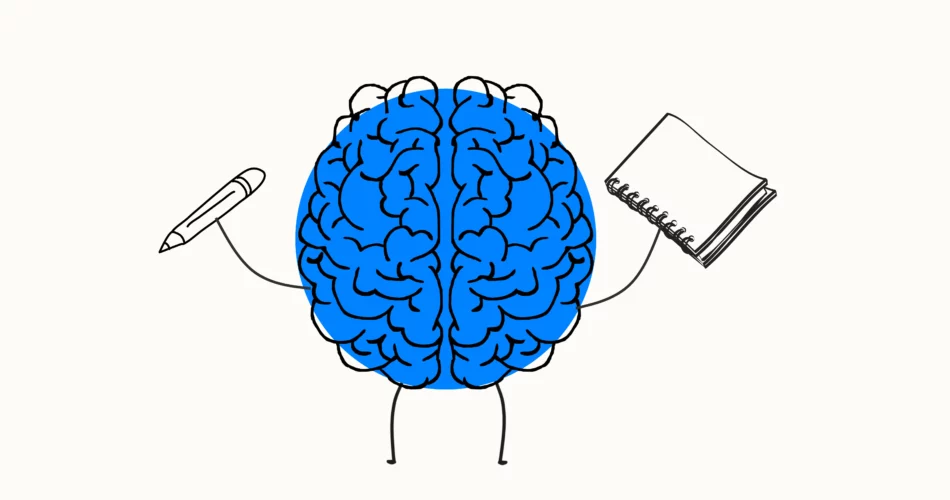Innovation is a critical element of success in today’s fast-paced and ever-changing world. However, coming up with creative and innovative ideas can be a challenge, especially when brainstorming sessions become unproductive or dominated by a few individuals. This is where brainwriting comes in.
Brainwriting is a group ideation technique that can help teams generate innovative ideas by encouraging participation from everyone in the group. In this article, we’ll explore the concept of brainwriting, how it works, and how you can implement it in your team’s ideation process to boost creativity and productivity.
What is Brainwriting?
Brainwriting is a group ideation technique that involves generating and sharing ideas silently in a structured and controlled environment. Unlike traditional brainstorming sessions, where ideas are generated through verbal communication, brainwriting allows team members to express their ideas in writing, without being influenced by others.
Brainwriting is a collaborative process that involves several rounds of idea generation and sharing. In each round, team members write down their ideas on a sheet of paper, which is then passed to another team member who builds on the previous ideas or comes up with new ones. This process continues until all the sheets of paper have been filled with ideas, which are then shared and discussed by the entire group.
How Does Brainwriting Work?
Brainwriting is a simple yet effective process that can be implemented in just a few steps:
Step 1: Set up the Brainwriting Session
The first step is to set up the brainwriting session. This involves deciding on the number of team members, the duration of the session, and the materials needed, such as sheets of paper and pens. It’s important to create a structured and controlled environment that encourages participation and creativity.
Step 2: Introduce the Challenge
The second step is to introduce the challenge to the team. This could be a specific problem that needs solving or a general topic that requires ideation. The challenge should be clearly defined and communicated to the team members.
Step 3: Brainstorm Ideas Individually
The third step is to give team members a set amount of time to brainstorm ideas individually. Each team member should write down their ideas on a sheet of paper without discussing them with others.
Step 4: Pass the Sheets of Paper
The fourth step is to pass the sheets of paper to another team member. The team member can then build on the previous ideas or come up with new ones. This process continues until all the sheets of paper have been filled with ideas.
Step 5: Share and Discuss Ideas
The fifth and final step is to share and discuss the ideas generated. This can be done in a group setting, where each team member presents their ideas or in pairs, where team members share and discuss their ideas with one another.
Benefits of Brainwriting
Brainwriting offers several benefits over traditional brainstorming techniques, including:
- Encourages Participation
Brainwriting encourages participation from everyone in the group, including introverted team members who may be hesitant to share their ideas verbally. This ensures that all team members have a say in the ideation process and increases the chances of generating innovative ideas.
- Reduces Bias and Groupthink
Traditional brainstorming sessions can be dominated by a few individuals, leading to bias and groupthink. Brainwriting eliminates this problem by allowing team members to express their ideas independently, without being influenced by others.
- Boosts Creativity and Productivity
Brainwriting allows team members to generate ideas more quickly and efficiently than traditional brainstorming sessions, leading to higher levels of creativity and productivity. This is because team members can work independently, building on their own ideas and the ideas of others, without being interrupted or distracted.
- Provides a Structured and Controlled Environment
Brainwriting provides a structured and controlled environment for ideation, which helps to keep the session focused and on track. This is especially useful when dealing with complex or challenging problems that require a methodical approach.
- Generates a Higher Quantity and Quality of Ideas
Brainwriting generates a higher quantity and quality of ideas compared to traditional brainstorming sessions. This is because team members have the opportunity to generate and build on multiple ideas without interruption, leading to a more diverse and comprehensive set of ideas.
- Enhances Collaboration and Teamwork
Brainwriting promotes collaboration and teamwork by encouraging team members to build on each other’s ideas. This fosters a sense of shared ownership and collective responsibility for the ideation process, which can improve team dynamics and relationships.
Tips for Implementing Brainwriting in Your Team
Now that you understand the benefits of brainwriting, here are some tips for implementing it in your team’s ideation process:
- Define the Challenge Clearly
To get the most out of brainwriting, it’s important to define the challenge or problem clearly. This helps team members to focus their ideation efforts and generate relevant ideas.
- Create a Structured and Controlled Environment
Brainwriting works best in a structured and controlled environment that encourages participation and creativity. Make sure to set clear guidelines and time limits for each round of ideation, and provide the necessary materials and resources.
- Encourage Independent Ideation
Brainwriting is all about independent ideation, so make sure to emphasize this to your team members. Encourage them to generate ideas without discussing them with others, and to build on their own ideas and the ideas of others.
- Foster Collaboration and Teamwork
Although brainwriting involves independent ideation, it’s important to foster collaboration and teamwork by encouraging team members to build on each other’s ideas. This promotes a sense of shared ownership and collective responsibility for the ideation process.
- Evaluate and Select the Best Ideas
After the brainwriting session, it’s important to evaluate and select the best ideas for further development. This can be done through a group discussion or by assigning a designated evaluator to review and select the most promising ideas.
- Implement and Test the Ideas
Once you’ve selected the best ideas, it’s time to implement and test them. This may involve prototyping, user testing, or market research to validate the ideas and refine them further.
Conclusion
Brainwriting is a powerful ideation technique that can help teams generate innovative ideas by encouraging participation, reducing bias and groupthink, boosting creativity and productivity, and providing a structured and controlled environment for ideation. By following the tips outlined in this article, you can implement brainwriting in your team’s ideation process and unlock the full potential of your team’s creativity and innovation.


